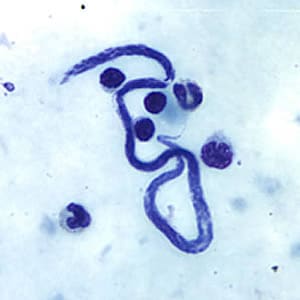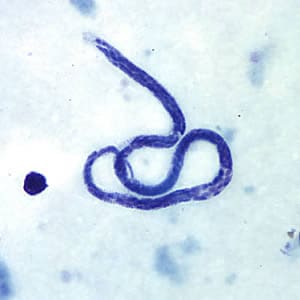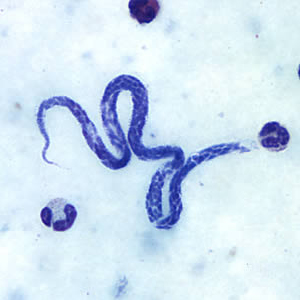
Case #144 - November, 2004
A 29-year-old female from the West Indies was visiting relatives for a few months in the Midwest. After several weeks she began to experience fevers, headache, and occasionally insomnia. Her relatives took her to the emergency room of the local hospital where she explained that she had malaria about one year previous and thought that she may be experiencing a relapse. Thick and thin blood films were made, stained with Giemsa, and examined. Nothing reportable was observed on a thin film; the objects seen in Figures A-C were observed on the thick film at 1000× magnification. The objects were approximately 180–190 micrometers long. What is your diagnosis? Based on what criteria?

Figure A

Figure B

Figure C
Images presented in the monthly case studies are from specimens submitted for diagnosis or archiving. On rare occasions, clinical histories given may be partly fictitious.
DPDx is an educational resource designed for health professionals and laboratory scientists. For an overview including prevention, control, and treatment visit www.cdc.gov/parasites/.